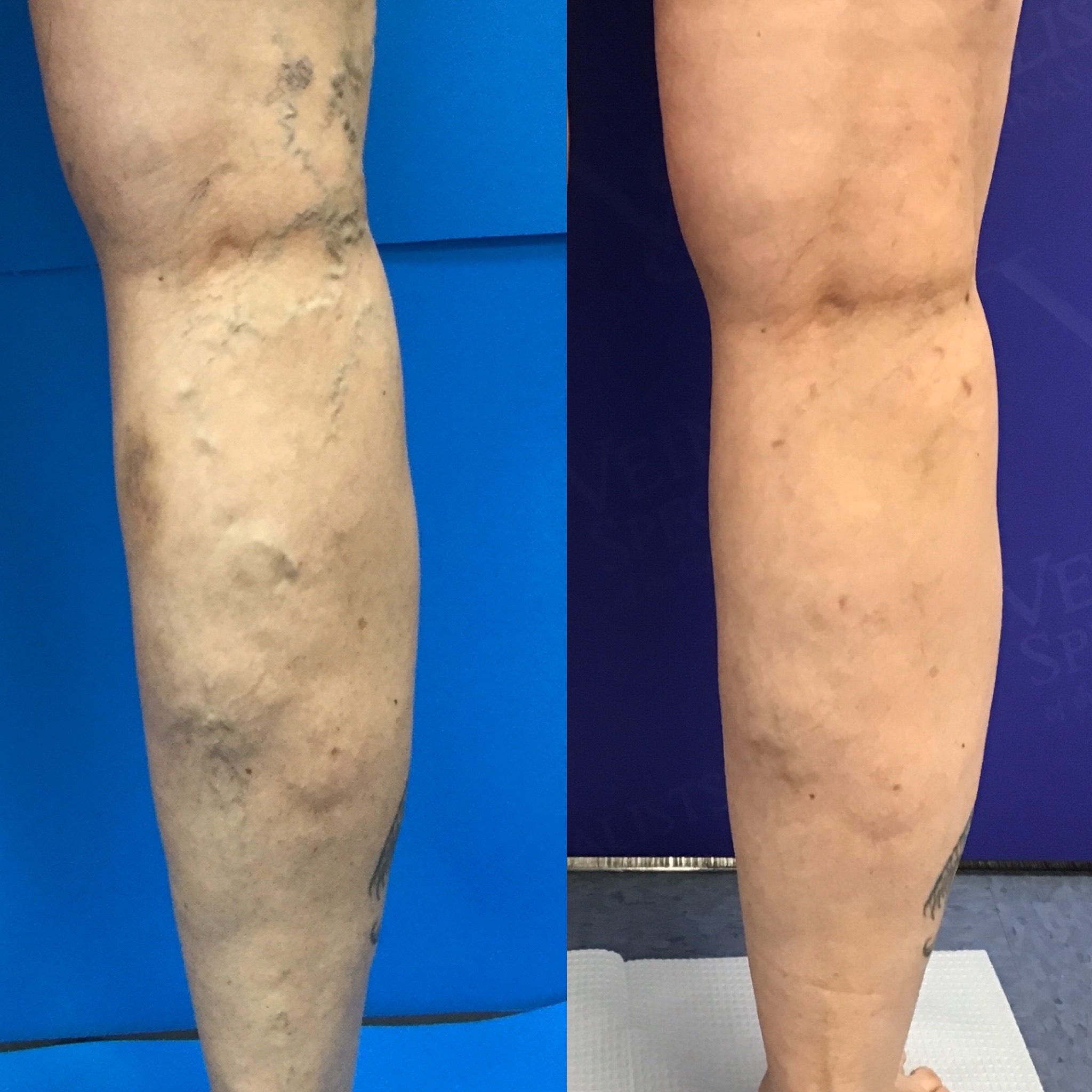Spider veins or telangiectasia are those visible networks of red and blue lines that often appear on the legs.
While they are often a simple cosmetic concern, some individuals may experience uncomfortable symptoms with their spider veins as well. Because there are a number of reasons why spider veins might occur, it is always best to have those vessels checked out by a physician that specializes in vascular disorders to ensure you get an accurate diagnosis and the best treatment options.
Spider Veins and Varicose Veins
Spider veins are often a smaller version of varicose veins, those unsightly swollen vessels that can protrude above the skin’s surface and cause significant discomfort for some sufferers. In these situations, the cause of the spider veins can be attributed to an underlying vein condition known as venous reflux.
Venous reflux is the result of damage to small valves inside the veins. Under normal circumstances, these valves help keep blood flowing in a single direction through the vessel, back to the heart. When the valves stop working properly, blood refluxes back into the vein, leading to enlargement of the vessel that becomes visible on the surface of the skin.
When Symptoms are Present
When spider veins are caused by venous reflux, they are more likely to be accompanied by symptoms like leg heaviness, pain and cramping. Your legs may feel fatigued by the end of the day and you might experience a restless leg feeling at night when you go to bed. These symptoms can also mean there is an underlying reflux problem in one of the larger veins deeper inside the legs. In these cases, the underlying vein should also be treated to ensure the best prognosis.
Risk Factors for Spider Veins
While venous reflux is a common reason behind the appearance of spider veins, it is not the only one. These veins may also appear as a result of an injury or sun damage to the area. You might also be more prone to the formation of spider veins if you have any of these risk factors:
- Family history of spider or varicose veins
- Weight gain and/or a sedentary lifestyle
- An occupation that requires long periods of sitting or standing
- Hormonal fluctuations, such as those during pregnancy and menopause
- Certain medications, particularly hormone replacement therapy or steroids
If you do develop spider veins at any point during your life, you don’t have to suffer with the cosmetic embarrassment or the physical pain of those visible vessels. Today, there are state-of-the-art diagnostic tools and treatment options to help you eliminate those vessels completely.
The Diagnosis Process
If you call Vein Specialists of the Carolinas with a desire to eliminate spider veins, we will ask you if you are experiencing any symptoms with the veins. If the answer is yes, it is likely the condition is due to venous reflux, either in the spider veins themselves or an underlying vessel. In these cases, we typically perform a standing ultrasound to determine whether reflux is present before recommending treatment.
Treatment Options
If you do not have symptoms, we will probably treat your spider veins as a cosmetic problem. This entails using an injectable treatment known as sclerotherapy, which collapses the vessel from the inside out so it can be reabsorbed by the body. Sclerotherapy is a highly effective method of treating spider veins that does not require anesthesia or involve any downtime. Patients may require more than one treatment session to achieve full results.
If you want to get rid of your spider veins for aesthetic reasons or to eliminate uncomfortable symptoms, help is available. Contact Vein Specialists of the Carolinas at 704-861-2072 or 704-544-5245 to schedule your consultation with us today.
“All We Do Is Veins, All Day Every Day.”

